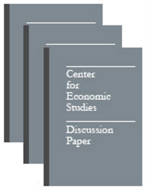
An official website of the United States government
Here’s how you know
Official websites use .gov
A .gov website belongs to an official government organization in the United States.
Secure .gov websites use HTTPS
A lock (
) or https:// means you’ve safely connected to the .gov website. Share sensitive information only on official, secure websites.
-
//
- Census.gov /
- Library /
- Census Working Papers /
- Building New Plants or Entering by Acquisition? Estimation of an Entry Model for the U.S. Cement Industry
Building New Plants or Entering by Acquisition? Estimation of an Entry Model for the U.S. Cement Industry
Building New Plants or Entering by Acquisition? Estimation of an Entry Model for the U.S. Cement Industry
Abstract
In many industries, firms usually have two choices when expanding into new markets: They can either build a new plant (greenfield entry) or they can acquire an existing incumbent. The U.S. cement industry is a clear example. For this industry, I study the effect of two policies on the entry behavior and industry equilibrium: An asymmetric environmental policy that creates barriers to greenfield entry and a policy that creates barriers to entry by acquisition (like an antitrust policy). In the U.S. cement industry, the comparative advantage (e.g., TFP or size) of entrants versus incumbents and the regulatory entry barriers are important factors that determine the means of expansion. To model this industry, I use a perfect information static entry game. To estimate the supply and demand primitives of my model, I apply a recent estimator of discrete games to a rich database of the U.S. Census of Manufactures for the years 1963-2002. In my counterfactual analyses, I find that a less favorable environment for mergers during the Reagan-Bush administration would decrease the acquired plants by 70% and increase the new plants by 20%. Also, I find that the Clean Air Act Amendments of 1990 increased the number of acquisitions by 7.8%. Furthermore, my simulations suggest that regulations that create barriers to greenfield entry are less favorable in terms of welfare than regulations that create barriers to entry by acquisition. Finally, I demonstrate how my parameter estimates change when I apply the traditional approach in the entry literature where entry by acquisition is not considered, and when using a simple OLS estimation.
Others in Series
Working Paper
Working Paper
Working Paper
Share
Related Information
Some content on this site is available in several different electronic formats. Some of the files may require a plug-in or additional software to view.
 Yes
Yes
 No
NoComments or suggestions?


Top

